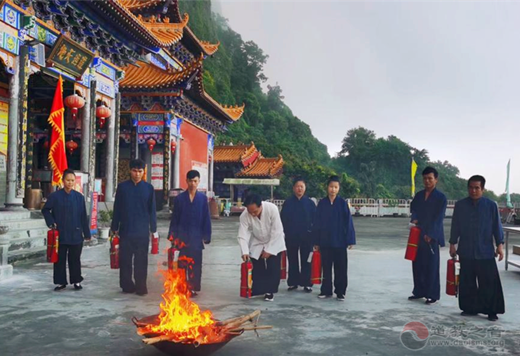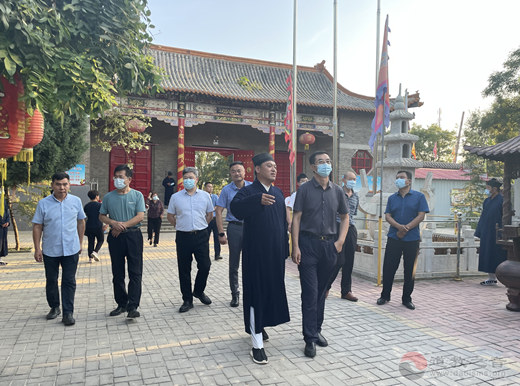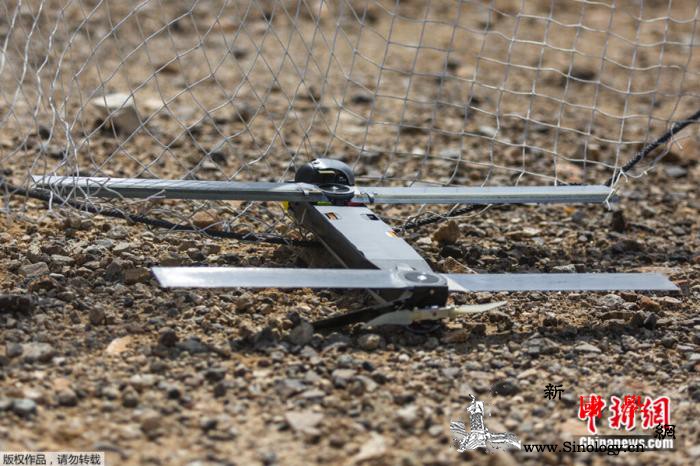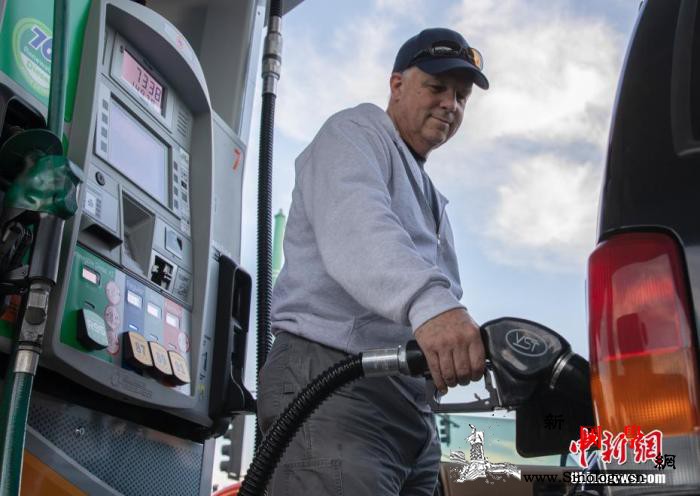
高云《还记得我们吗——纪念新四军建军70周年(国画)》
195×115厘米
在迎接新中国成立70周年的日子里,高云先生的代表作品汇集成册并精选展示,作为美术界的同道人,我为此举深感高兴。此前虽有他的多种画册刊行,在几十年来中国美术的各类展览中更是常见他奉出的新作,但以集观的方式将他的艺术积累作全景式的编排,他的艺术来路和走向便更加清晰,他的艺术探索和创造也足值同行交流与公众激赏。
高云是在改革开放的伟大时代成长并走向成熟的艺术家。中国社会巨大的历史变迁和发展进步为艺术家施展才华提供了难得的机遇,也在文化和学术的层面上提出新的挑战。高云的可贵之处就在于珍惜时代的机遇,努力投身时代变革的大潮,在思想意识上紧紧追随时代,把握时代的脉搏。几十年来,他始终抱以坚定的文化理想,始终拥有艺术创作的激情,在艺术实践上体现出与时代同步伐的精神追求。时代感动和激励着他,他也立志以持续的艺术探索为时代讴歌。在他的笔下,无论是历史主题还是现实题材,无论是煌煌大幅还是精致小品,他在创作的主题立意、构思构想、情境营造、形象塑造上始终体现出鲜明的时代意识,作品充满了开阔明朗的意境、生机盎然的气韵和明快清新的格调,折射出蓬勃的时代气象,更体现出高昂的时代精神。
改革开放使中国文艺和文化的语境发生了历史性的变革。对于一个画家来 说,这种变革既在宏观的文化识度上提出了考验,要求画家在变革中求发展,在文化观念上处理好传承与创新的关系,从艺术学理的角度审视历史, 面向当代,为自己的艺术寻找正确的坐标。高云的艺术发展始终贯穿着清醒的文化意识,突出体现出思在笔先,以思带行的实践方式,他的创作不仅较早地形成个性面貌,而且展现出恒定的理念。正是这种稳定和持续的精神追求,使他的艺术拥有稳定的质量。对于一个中国画家来说,时代的变革更在具体的实践上提出新的课题。中外文化新的碰撞与交流,国际艺术潮流对中国艺术特别是中国画的冲击与影响,全球信息化浪潮对艺术图像的美学样式构成的挑战,都是中国画家无法回避的文化语境与现实际遇。高云没有回避和逃离中国画面临的这些时代挑战,而是始终对中国画的当代发展充满信心,以坚持守正创新的信念不断探索,尤其是在中国画的意境表现和笔墨语言上攻克难题,借助传统文化形成自身学术发展的内在支撑,通过深入生活、感受现实获得创作的原发动力,从而使每一次创作都成为解决问题的研究过程,在每一组每一幅的作品构思和表达上寻找新的突破,在艺术表现的维度上不断拓展,建立起丰沛的艺术世界。
时代的机缘在不同的艺术家那里各有不同。高云在中国画坛的突出成就不仅体现在思想的精深和艺术的精湛上,也体现在他丰富的人生经历中。他是美术界具有多重“身份”的画家,先后从事美术编辑出版、美术馆管理和文化行政等工作,多岗位的历练使他始终葆有宽阔的文化视野与独特的认知高度,而在他那里,行政工作和创作研究又能相得益彰、互为补益,尤其形成他艺术的格局。他的能力在于能将多种经验集中起来,转化为自己创作的能量,调度和运用他的工作经验,把画外之能转化为笔下之意,从而使作品体现出宽阔的境界和丰富的内涵,这也堪称高云艺术的独特个性。
具体地说,高云的艺术有三个方面突出特点:
其一,他擅于用当代的视角表现历史题材,在历史题材中赋予时代的新意。多年来,高云始终关注重大历史题材创作,不断回溯传统文化内涵。历史主题美术创作自古便有“明劝诫,著升沉,千载寂寥,披图可鉴”的要求,在历史主题美术创作中画出时代新意,彰显时代精神是增强民族文化自信,培育和弘扬民族精神,建设中华民族精神家园的重要方式。在高云的艺术创作生涯中,可以很明显地看到他对这一题材的研究探索,从《魂系马嵬》《永乐修典》到《还记得我们吗?》等作品中,可见他努力追求一种宏大而隽永的表达,试图在某种具有历史表述的创作方式下将人物、情节与画面有效地组合,区别于历史文本的直译和平行转化,而将其构建为兼具历史厚度与艺术品格的力作。历史题材创作不仅要有驾驭巨幅画面的布置经营能力,更要有严谨的历史考据,需要画者深入史实,研究彼时的社会背景、文化情境,查考搜集历史资料、文献、图片、轶事等,借以营造具有真实性的历史场景。高云在不断的考量构化、巧思推敲中,使历史主 题创作呈现出融历史性、创造性与审美体现为一体的艺术精品,谱写出了一个国家和民族历史的精神长歌。
其二,他擅于在开合之中把握艺术构成,以形象展现情节,在情节中塑造形象。从大型历史主题创作到古典人物题材绘画,从连环画到多种邮票创作,从精细的工笔人物到兼工带写的文人高士,高云所涉猎的题材和体裁是比较丰富的,足见他触类旁通的能力和沉潜创造的逸兴。一如工作经历的丰富性,他是艺术创作的多面手,而多种题材和形式需要解决的基本问题又是集中的,那就是如何在具象的造型体系中画出每一幅的新意,以师古与创变的精神形成既蕴含传统意韵,又带有当代体悟的图式风格。纵观高云的大量作品,可以很明显地看到他创变的意识与理路。他重点研究的是画面的经营布局、人物组合、设色勾描到抒情达意的整体性,始终关注如何深入发掘内容与形式上的创新,以鲜明的现代艺术构成意识呈现极具节奏感的开合之态。沈宗骞有论:“天地之故,一开一合尽之矣。”作画之开合,犹如舞台之调度,行文之起落。高云擅于运用大面积团块的形式组合,巧妙地处理画面中主与宾、景与物、繁与简、疏与密等视觉构成关系,张弛有度,笔到意生,使得复杂的事件情节与人物组合皆于脉络开合的顿挫转折处天然而成,融为妙境。例如在《永乐修典》中,背景人群的白描处理与画面中央主体人物的重彩处理相得益彰,既表现出了永乐大典产生过程中劳动的程序性与复杂性,又凸显了帝王观书这一场景的隆重盛况。他创作的许多精美邮票也同样追求一种宏大而隽永的表达,使方寸之间别有故事和意境,更见主体的形象。他在调度人与物、场景与空间上是一个高手,尝试通过多种形式呈现历史文化中的“众生相”,形成了与历史、社会、文化环境紧密相连的画面气象。在这方面,他组织和指导舞台艺术的工作经验发挥了独特作用:画面如舞台空间,他如戏剧的导演,将人与景、情节与形象作立体的调度,使人物入“戏”、画面有“戏”,观众可以品“戏”。高云在画面这个舞台上身心投入,在“人”“景”与“心境”中徜徉往返,将自己对主题的感悟投射于绘画的创造之中,增强和丰富了当代中国画的表现力。
其三,他突出研究和发展了中国画线条的表现力,以线条造型塑像,更呈现线条的时代美感。高云从少年时代起就对绘画产生极大兴趣,后来加入江苏省美术创作班进行创作学习,开始崭露头角,再入南京艺术学院得高师亲炙,刘海粟、陈大羽、张文俊等艺坛巨擘都曾指导他学习中国画,由此练就了极强的速写造型能力和中国画笔线造型的表现力。他对线条的把控处理,可谓如篆籀行草之磊落,似枯藤游丝之盘旋,顿挫波折,意趣相生。无论是写意画中跌宕浑厚的书写性笔法,还是工笔人物严谨精微的描画勾勒,线条的造型、布局、起伏、行进皆精妙传神。几十年的实践练就了他的线条感性,以“工摹”线条精准塑造形象,在线条的运行中贯穿了情感,使线条一如他心灵的游丝,紧劲相连,抒情表意。与此同时,他的线条又与设色和渲染密切相关。他追求画面整体色调的高雅,特别注重把握色彩的品质和渲染的气韵,又以画面的色调和渲染的肌理衬托线条,达到线与色、形与意的有机相融,而从中衬映出的线条之美成为高云突出的笔墨贡 献。近年来,他还以西方古典油画的肖像人物为蓝本,将其作中国画表现的转换,把西方古典绘画的明暗体系转换为中国画的线条表现手法,足以可见他在线造型研究上的用心与入迷,也体现出他对中国画线条语言的文化自信。
高云的艺术理路始终基于传统而进行一种主观意识化的处理创造,以通达 流畅的笔墨语言呈现出对中国画时代性的思考与转变,进而在画面中体现为极具传统审美价值与当代艺术图式双重语言叠加的视觉营构,为新的艺术之路打开了一个不断精研进取的开放空间,在写实、抒情与表意的画面语言中朝向更新的笔墨境界,在历史叙事与塑造形象之间形成具有时代温度的笔墨语言。可以想见,在高云展纸运思之际,放眼历史林壑,烟云往复,不由生发沉沉的感动和幽微的感兴,也生成如水流光、滋兰性情。他的艺术创造往往以“实境”为发端,从实景实境中取材创造,但又了无凡尘之累,脱胎于“实”而到达抒心表意之化境,这是高云对社会环境与历史文化的视觉投射,也是个人艺术心性的自我畅游。在简净高雅的空间和丰美的人物群像之中,情意却是千回百转。
今天新时代的宽阔语境为中国画的发展带来了充足的创作条件与发展空间,这一方面需要我们浸润于传统文化积淀进行转化创造,另一方面需要我们不断合振时代脉搏进行有效探索,为新时代中国画艺术的发展而努力。高云业已形成他自己的艺术成就与精神境界,可期不断精进,迈向高峰。
范迪安( 中国美术家协会主席、中央美术学院院长、博士生导师 )
2019 年 5 月于北京
Preface
Gao Yun: Musing over History and Recalling Epochs
Fan Di’an (Chairman of China Artists Association,President of Central Academy of Fine Arts, Doctoral supervisor)
As a fellow of the art world, I feel deeply delighted that Gao Yun’s representative works are brought together in an exhibition at the time of the celebration of the 70th anniversary of the founding of New China. Although he has published a number of artbooks before, and his works have frequently participated in exhibitions throughout the past decades, his artistic approach is much clearer when the works are anthologized panoramically. The exhibition provides a precious chance for the fellow artists to exchange ideas and a comprehensive presentation of the works to the public.
Gao Yun is an artist who grew up and stepped to maturity in the great era of Reform and Opening-up. The tremendous historical changes and developments in Chinese society provided rare opportunities for the artist to release his talents, and also challenged him at the cultural and academic level. The merits of Gao Yun laid in how he cherished the opportunities, strived to closely follow the changes of ideological trends, and consciously synchronised with the epochal pulse. For decades, he has always adhered to a firm cultural ideal, always upholding the passion for an artistic practice that looked to the epoch’s forward strides. The era moves and inspires him. He is also determined to eulogize the era with continuous artistic exploration. In his works, whether they have historical or realistic themes, large-scale masterpiece or small and exquisite composition, they always show a clear sense of the era in terms of themes, conception, mood and formal construction. His works are filled with the aura of broad-mindedness and clarity. His style is fresh and lucid, reflecting the flourishing atmosphere and the high spirits of the times.
Reform and Opening-up has brought about a historical change to the context of Chinese arts and culture. For an artist, this change put forward a test on the macroscopic understanding of the culture. It propelled artists to seek for development in the process of change,to effectively address the relationship between inheritance andcultural innovation, to examine history from the perspective of art theory, and to seek the right coordinates for his art practice in face of contemporality. A sober cultural consciousness continuously runs through Gao Yun’s artistic development. This is highlighted in his practice; think before paint, thoughts lead the acts. His art not only obtained an individuality early on, but also shows a firm creed. It is this steady and sustained spiritual pursuit that gives his art a stable quality. For a Chinese painting artist, changes of the times suggest new issues at a concrete level of the practice. The new collision and exchange between Chinese and foreign cultures, the impact and influence of international art trends on Chinese art, especially on Chinese painting, as well as the challenges presented by global informatisation to the
aesthetic style of art images, are all unavoidable cultural contexts and actual circumstances necessarily encountered by Chinese painting artists. Gao Yun also did not escape these challenges for Chinese painting, nor has he attempted to evade them. He has always been full of confidence in the contemporary development of Chinese art, and constantly strives to innovate. He focuses especially in overcoming problems of artistic conception and that of the ink-and-brush language; learning from the traditional culture, he has formulated a constitutive framework for his own research. In-depth investigation of daily life and perceptions of reality are original source for his motivations, propelling him to make each creation process a research process that endeavours to solve problems. In the conception and expression of every piece or group of works, he seeks breakthroughs and pushes boundaries in the realm of artistic expressions, and builds a prolific art world.
The opportunities bestowed by the epoch to different artists give different returns. Gao Yun’s outstanding achievements in Chinese painting are not only reflected in the profoundness of his thoughts and the exquisiteness of his art works, but also in his rich life experience. He is an artist with multiple ‘identities’. He has worked in fields including art editorial and publishing, and museum management and cultural administration. His experience encompassing multiple official posts has provided him with a broader cultural vision and an incomparable aptitude of understanding. In his case, administrative work and creative research can complement and facilitate one another, formulating a unique artistic approach. His talent lies in the ability to bring together a variety of experience and transform them by virtue of a creative energy. He can mobilize and utilize his work experience, converting forces felt outside of the art practice into painting, so that the works reflect a broad realm of reflection and profuse involution. Such is the distinctive characteristic of Gao Yun’s art.
To be more specific, Gao Yun’s art has three prominent features.
First, he is good at expressing historical themes with contemporary perspectives, thus assigning new meanings to the history. Over the years, he has concentrated on creating works of major historical themes, and investigated the involution of traditional culture. For paintings of historical subjects, they have long been required to‘offer edification and record the vicissitudes in history, so that what happened in the vast span of thousands of years can be presented in visual form’ (from Guhua Pinlu, by Xie He). To be able to express the spirit of the new era, strengthen national self-confidence and boost the national spirit, paintings of historical themes form an important path in fostering a culture of harmony and cultivating civilized practices.
We can clearly notice Gao Yun’s research of this subject in his art career. In his works such as Broken Soul at Mawei, The Making of the Great Canon of the Yongle Reign, and Remember Us?, it can be seen that he strives for a grand and unequivocal expression and attempts to effectively combine characters, plots and scenes in a way that expresses a specific historical significance. They are laid out as masterpieces with both a historical density and a unique art style which does not literally translate a historical narrative. To create a painting of a historical subject not only requires a comprehensive grasp of large-scale scenes, but also a rigorous textual research of the history. To create a historical scene with authenticity, artists need to have the capability to delve into historical facts, study the social backgrounds and cultural situations of the time, and collect historical data, documents, pictures, anecdotes, etc. With continuous consideration and careful deliberation, Gao Yun is able to create works of historical subjects that integrate historicity, creativity and aesthetics, and compose epics that praise the spirituality of the national history.
Secondly, he is a master in grasping artistic composition with the spirit of ‘rise and fall’; unfolding plots with images and shaping images with plots. From large-scale paintings of historical subjects to those with classical figures, from picture storybooks to stamps, from meticulous gongbi characters to gongbi-and-xieyi scholars, Gao Yun dabbles in a rich variety of subject matters and genres, which shows that he is able to comprehend new things by analogy, and he is passionate about diving into art creation. Similar to the richness of his work experience, he is also a versatile artist. But with it comes a basic as well as a protruding puzzle, that is, how to bring out the new in every piece of work within a painting system grounded in concrete forms, in other words, how to formulate a pictorial style that contains both traditional implications and contemporary understandings. In view of Gao Yun’s oeuvre, we can clearly see the consciousness and rationality of his art practice.His research focuses on the composition and layout of the scenes, arrangement of figures, lines and colours, as well as an integral lyricism. He has always concerned himself with insightful and innovative exploration of content and form, presenting an organic rhythm through a vivid constructive consciousness of modern art. Shen Zongqian once said: ‘grounds of the heaven and the land lie in the opening-closing (rise-and-fall)’. The opening-closing of paintings is similar to the blocking of stage, or the rise-and-fall of writing. Gao Yun has a flair for manoeuvring formal combinations of large masses, deftly handling the visual relationship between the major and the minor, scenes and objects, complexity and simplicity, and sparseness and denseness. With a balance of loosening and tightening, his ideas bloom at the tip of brush. Complex plots and arrangements of figures naturally emerge at the turning point of the opening-closing, blending into a wonderland. For instance, in The Making of the Great Canon of the Yongle Reign, the figures in the background painted in baimiao (‘monochrome- outline’) complement the central figures in heavy colours. Thus, not only the procedure and the complexity of making the Great Canon are represented, but also the awe-inspiring occasion of the emperor’s inspection under the spotlight. Many of the stamps he designed also pursue a grand and timeless expression, making these small pieces extremely lively with vivid subjects. He is a genius in arranging the relationship between figures, objects, scenes and space. He tries to present the panorama of history and culture through a great diversity of forms, constructing images that closely connect with the historical, social and cultural environments. In this respect, his work experience in organizing and guiding stage art has played a unique role. A painting is like a stage. He is like a theatre director, arranging actors and scenes, plots and images. He guides the actors to become absorbed in acting in the ‘play’. He constructs the scenes to express the ‘play’, and invites the audience to enjoy the ‘play’. Gao Yun has devoted his life to a stage by and in painting, walking among the ‘figures’, ‘scenes’ and ‘minds’. By projecting his own understandings of various subjects into the practice of painting, Gao Yun has significantly developed and enriched the expressive power of contemporary Chinese painting.
Thirdly, he has researched and developed the expressive capacity of lines in Chinese painting. By shaping forms, the lines communicate an epochal aesthetics. Gao Yun has been enraptured by painting since he was a teenager. Later he participated in the provincial creative art class and entered the public’s view. He was then admitted by Nanjing University of the Arts and was taught by great masters of art including Liu Haisu, Chen Dayu, and Zhang Wenjun. During his study at NUA, he gained a good command of sketching and generating expressive power through lines in Chinese painting. His handling of the lines can be compared with the poise and ease of seal and running scripts, the zigzag of withered vines or silk threads, cadences and transitions, charms and appeal. Whether they are flowing brushstrokes in a xieyi style, or meticulous gongbi lines, the shapes, layouts, up-and- downs and movements of lines are all exquisitely expressive. Decades of practice have trained the sensibility of his lines. He accurately shapes images with careful and precise lines, infusing emotions in the running of them, so that they become threads spun out of his mind. At the same time, his lines are closely related to the colouring and smearing. He seeks for an elegance of the overall tone, and pays particular attention to the quality of colours and the liveliness of rendering. By complementing the lines with the tone and the texture of smearing, the painting achieves an organic integration of line and colour, form and meaning. The beauty of lines emerging out of all these features has become an essential contribution by Gao Yun. In recent years, he also used portraits of classical western oil painting as blueprints, transforming them by re-presenting them by Chinese painting, converting the system of light and shadow to the lines. It shows his concentration and fascination with the structuring and shaping potentialities of lines, and reflects his cultural confidence in the language of lines in Chinese painting.
Gao Yun’s artistic journey has built itself on tradition and proceededby a rendering and creating anchored on subjective consciousness. Reflections on the transformation of the contemporary significance of Chinese paintings are represented through a fluent ink-and-brush language. These reflections and transformations are to be found in the visual construction of a double language overlay of traditional aesthetic values and contemporary art forms, activating an open space for a new path of artistic explorations. The achievement of ink-and-brush will be accomplished by a language of the picture plane that is realistic, lyrical, and signifying. A language of ink-and-brush that transmits the warmth of its epoch is formed in between historical narratives and images of people. One can imagine how Gao Yun, contemplating in front of stretched paper, looks out to the valleys and peaks of history, the fumes and clouds covering and revealing. He can’t help but be deeply moved and touched by the dim but gleaming nuance of history. Over the years, he sees light flowing like water, and becomes imbued with an orchid-like temperament. His artistic creation always begins with the ‘actuality’, from which he finds the materials needed while saving the cumbersomeness of the humdrum. Though borne out of the ‘actual’, his art creation arrives at a sublimity expressive of inner experience. They are Gao Yun’s visual projections of social environments and historical culture, as well as a free exploration of the private artistic mind. Among a group portrait made up of copious and beautiful figure paintings set against simplistically elegant space, the emotions and feelings are intertwined within.
Today, the broad context of the new era has brought opulent condition and space for development to the field of Chinese painting. To meet with the challenge and to strive for the future development of it, the practice of Chinese painting needs to be transformed and re-created with a strong foothold in the traditional culture on the one hand, and on the other, with valid investigation and exploration that synchronize with the epochal pulse. Gao Yun has accomplished his own artistic quest and arrived at a commensurate spiritual realm. The unraveling of his future practice will ascend to a soaring peak.
May 2019 in Beijing
关键字: 内容标签:展览,工笔画,德基美术馆,范迪安,高云,,历史,线条,中国画展览 工笔画 德基美术馆 范迪安 高云 历史 线条 中国画
如果本站的内容资源对您有所帮助

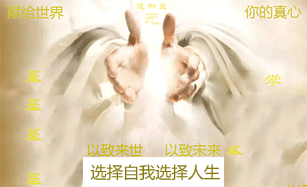
献给世界,你的真心,以致来世,以致未来


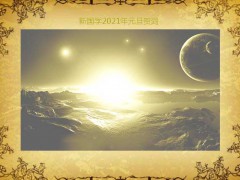
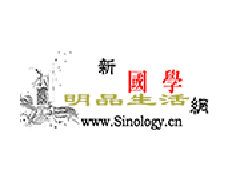

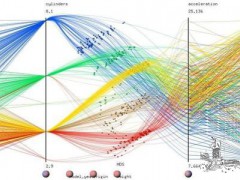
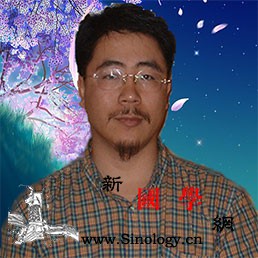
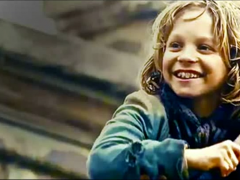
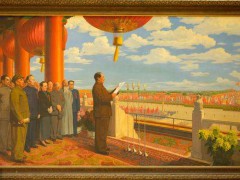
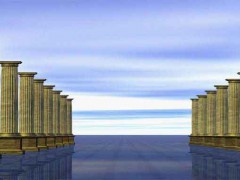
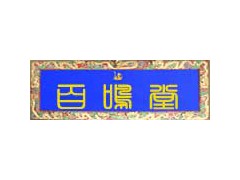
 推荐好文
推荐好文

